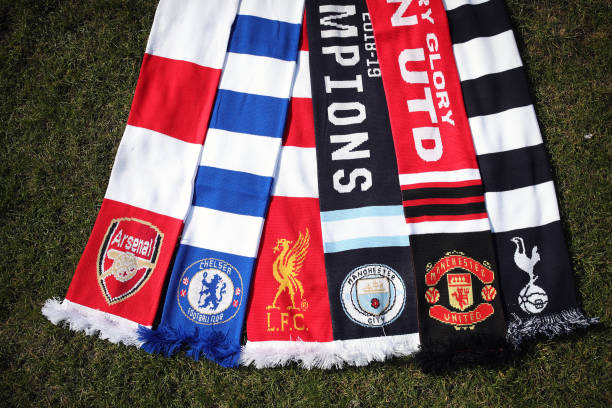The Premier League is preparing for its 34th campaign in its current form, but the debate that frames it is anything but new. At the heart of it lies the tension between historical stability and ascending influence. The 2025/26 season begins on Friday, August 15, with Liverpool welcoming Bournemouth to Anfield as the reigning champions.
The scheduling is ceremonial. It honours Liverpool’s resurgence under Arne Slot and symbolically reinforces the shifting weight within the upper rungs of English football finance. The question is no longer which club has more history. It is who can apply their resources with greater precision over the course of 38 gameweeks.
The Traditional Premier League Financial Powers Prepare for Another Charge

Manchester United, Arsenal, and Liverpool stand as the clubs with the heaviest expectations and longest histories of success. Liverpool, led by Arne Slot, opened their defence at Anfield against Bournemouth, setting the tone with a fixture that whispers of certainty yet hides pitfalls. Slot, fresh from a title in his first season, now contends with challengers eager to take his crown. Manchester United welcomed Ruben Amorim, the latest figure charged with restoring their grandeur. Amorim inherits a squad laced with talent, yet he faces the burden of turning potential into points with little margin for error.
Pep Guardiola remains at Manchester City, maintaining an air of assuredness. His City side often functions like a precision machine, unyielding when in full motion. The key test arrives late in the season, with a closing-day clash against Aston Villa. That same fixture saw City claim glory from the jaws of despair three years prior. Aston Villa, now steadied under Unai Emery, have risen from mid-table wanderers to a club seeking a permanent seat at the top table.
Fresh Entrants and Revived Names Stir New Currents
The presence of Sunderland in the top flight changes the tone in the North East. The Tyne–Wear derby re-emerges after nearly a decade, a fixture brimming with intensity. Sunderland host Newcastle on 13 December, with the return fixture set for 21 March. These meetings may shape the regional mood well beyond the final whistle. Leeds United, guided by Daniel Farke, return with a crowd steeped in old fire. Elland Road offers a stage that rarely lacks noise, even when the football wavers.
Burnley, now under Scott Parker, take up the challenge again. Turf Moor, small in stature, becomes difficult terrain for even the best-drilled squads. These promoted clubs face stern tasks, yet they each carry their own reasons for belief. The last season saw all three promoted clubs fall straight back down. This time, the script may differ. Sunderland’s fixture against Chelsea on the final day hints at a campaign that may hinge on the smallest details.
Observations from Analysts and Reactions Among Supporters
Arsenal’s ambitions depend on more than just sharp tactics. They rely on navigating physical strain across multiple competitions. Mikel Arteta faces questions about overusing Bukayo Saka and Martin Ødegaard during crucial midweek fixtures. Supporters dig into tactical threads, comparing Saka’s wide creation to Ødegaard’s central orchestration. Transfer movements offer reassurance, but doubts linger beneath early optimism.
Shifts in the English Premier League odds reflect this constant negotiation between perception and momentum. Liverpool sit at 1/3 against Bournemouth, a line that expresses full market confidence in a routine outcome. Wolves, despite the home advantage, sit at 19/4 against Manchester City, an illustration of how little weight location carries when placed against Guardiola’s machinery. These numbers trace mood as much as forecast. They shift with lineup hints, post-match interviews, and the faintest signs of disruption or rhythm.
Structural Shifts and Technology Shape the Modern Game
Semi-automated offside technology now spans the Premier League in full. The aim is clarity, though fans continue to bristle when the human eye fails to match the machine’s precision. The lines are drawn, measured, and declared within seconds. The friction lies in how sterile it can feel. Puma, meanwhile, takes over the match ball duties from Nike, marking a visible shift in branding that speaks to deeper changes behind the scenes.
The fixture list follows familiar rhythms with 33 weekends and five midweek rounds. The final round, scheduled for 24 May, will feature all 20 clubs playing simultaneously. The average stadium capacity across the league sits just above 43,000, a figure bolstered by Everton’s move to the new Everton Stadium at Vauxhall. From Molineux to the Etihad, the grounds form the backbone of an industry that hinges on attendance, atmosphere, and identity.
Tactical Evolution Through Managerial Movements
Managers set the tone, and this season features appointments that suggest distinct philosophies. Tottenham Hotspur dismissed Ange Postecoglou in June, handing the reins to Thomas Frank. Frank had become an institution at Brentford but steps into a club that expects much and forgives little. His former club now place their faith in Keith Andrews, a figure with limited Premier League exposure but strong convictions.
Elsewhere, Enzo Maresca leads Chelsea. The Italian arrives with tactical principles shaped during his time under Guardiola. Reece James continues as captain, though questions remain about his long-term availability. Wolverhampton Wanderers turn to Vítor Pereira, while Crystal Palace persist with Oliver Glasner, who steadied the ship after a turbulent previous year.
Derbies, Tradition, and the Influence of Schedule
The calendar draws attention to matches rich in emotion. The North London derbies fall on 22 November and 21 February, each with the capacity to unravel seasons. The Manchester derbies are set for 13 September and 17 January, both falling at points where squad rotations will likely play a key role. Liverpool and Everton meet on 20 September at Anfield, with the return clash scheduled for 18 April.
These fixtures do more than attract viewership. They affect training priorities, dictate press narratives, and often define managerial tenure. Managers prepare differently for such weeks. Supporters build entire months around them. The matches themselves may lean toward caution, yet their impact stretches far beyond the 90 minutes.
Reflections on Power, Persistence, and Timing
The Premier League’s balance remains in motion. Traditional clubs carry history, expectations, and a sense of permanence. Newer managers and promoted clubs arrive with plans tailored to modern demands. Yet football remains a game dictated by moments. One goal-line clearance, one misplaced pass, or one tactical tweak can upend months of work.
As 2025–26 unfolds, the shifting lines between dominance and emergence will take form gradually. Clubs will attempt to forge momentum through calculated risk, technical fluency, and patience. The league often rewards clarity of thought over romantic narratives. While some chase dynasties, others aim to disturb that pursuit. The table offers space for both.
Main photo credit: IMAGO / SOPA Images




